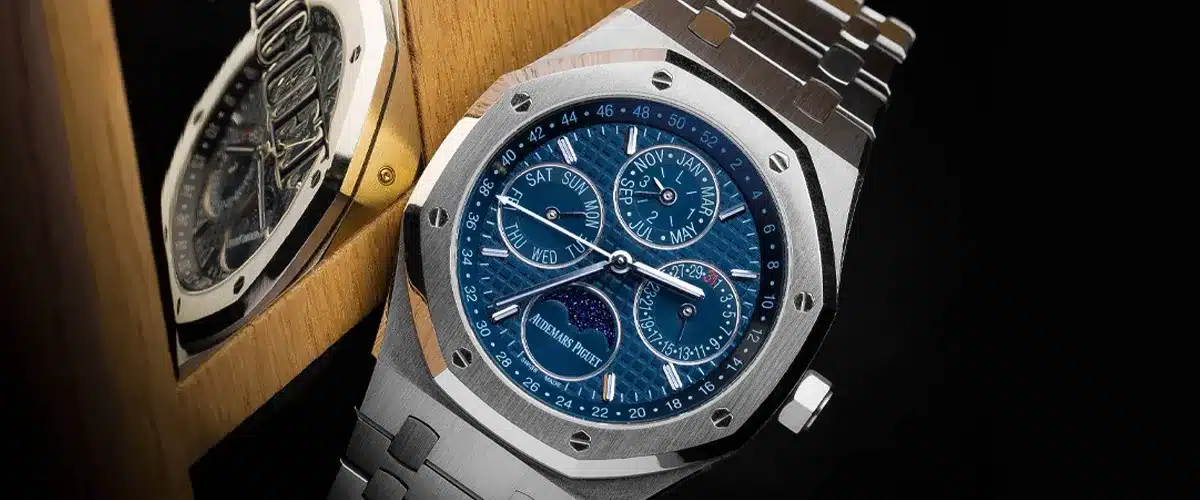Perpetual Calendar: A brief look at the past
We have been following the Gregorian calendar throughout the world for past many centuries now. While the calendar has proven to solve a lot of problems, it surely created one for watchmakers. Some months have 31 days, and some have 30. The month of February either has 28 days or 29 days, depending on whether it is a leap year or not. Most watch users had to correct the date almost every month manually.
Keeping track of these things was a challenge for watchmakers. They wanted to create a solution so that people never had to adjust the date manually. Hence, the Perpetual Calendar was born.
Invention and taking over
The perpetual calendar was created by Thomas Mudge in 1762 for a pocket watch. In 1889, Patek Philippe decided to file a patent for a perpetual calendar watch mechanism. The Swiss watchmaker then used the movement on a couple of pocket and pendant watches. With this mechanism, the company was able to achieve an immediate jump in dates and even lunar phases.
It was not until 1925 that we saw a perpetual movement being used on a wristwatch. This also made Patek Philippe the first watchmaker to take advantage of a perpetual calendar movement on a wristwatch. The trend started picking up, and we started seeing the advanced movement on Breguet and Jaeger-LeCoultre watches.
Even though it took a few years, Audemars Piguet joined suit with its first perpetual calendar watch in 1955.
The International Watch Company also played a major role in shaping the future of perpetual calendar watches. In 1985, the Swiss watchmaker introduced the Da Vinci Perpetual Calendar movement. This allowed the watch to control all indicators using the winding crown instead of using separate pushers. It was a game-changer at the time.
How do Perpetual Calendar watches work?
The perpetual calendar sounds like it is a complication that works exactly the same on every watch. But that is not the case. There are a variety of perpetual calendar watches available, and the functionality can differ ever so slightly. Most of the perpetual calendar watches that we see are designed to operate until the year 2100. However, upon reaching that point, a watchmaker will have to open the watch and readjust the movement.
Perpetual calendar watches are the most complex in nature as they house hundreds of intricate parts. For most of these watches, each part is fitted by hand, bringing the cost of production up by a significant amount. Most of these watches are also accompanied by a moonphase indicator, further increasing the complexity of making the watch.
The most important thing that makes these watches desirable is the fact that they will not skip a leap year following the Gregorian calendar. This makes the life of the user much easier as they do not have to adjust the date every month or more specifically, every March 1.
Most popular Perpetual Calendar watches
No matter which perpetual calendar watch you pick, the watch will always serve its purpose, and you will be able to enjoy the advantages of a perpetual watch. Here’s a quick look at the watches you should consider if you are on the hunt for a perpetual calendar watch.
- Patek Philippe Grand Complication
- Audemars Piguet Royal Oak Perpetual Calendar
- IWC Portugieser Perpetual Calendar 42
Patek Philippe Grand Complication
Patek Philippe Grand Complication is one such circular perpetual calendar watch that not just brings functionality but does it in style. It is an elegant-looking timepiece that is available in a variety of precious metals. Not just that, the Swiss watchmaker also gives you plenty of dial options to choose from.
Audemars Piguet Royal Oak Perpetual Calendar
Audemars Piguet Royal Oak is one of the most popular watch collections, and if you are looking for a perpetual calendar watch, you should look no further. Available in a variety of material choices, you can always find an AP Royal Oak Perpetual Calendar watch for yourself. Currently, the timepiece is available in stainless steel, ceramic, rose gold, white gold, as well as a titanium variant.
IWC Portugieser Perpetual Calendar 42
IWC Portugieser comes with a 42mm case that sits on a leather strap. It is a circular perpetual calendar watch, and it is available in a variety of dial color options. It features an open case back and offers a power reserve of up to 60 hours.
